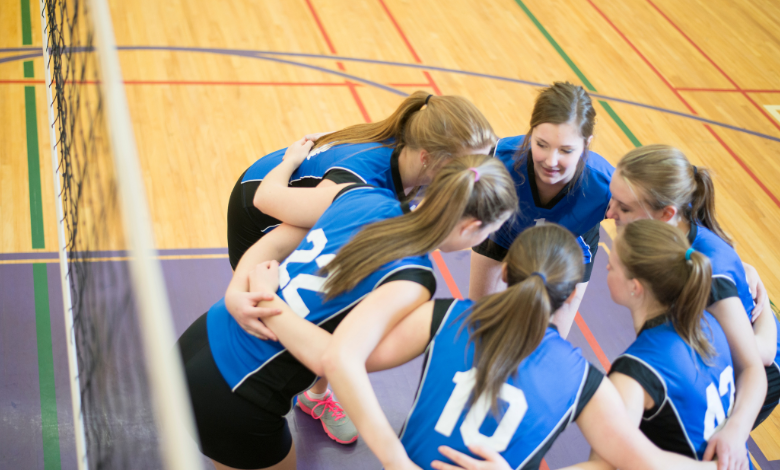The Rise and Reign of Brazil’s Women’s Volleyball Team

If you follow volleyball even casually, you’ll notice one constant: Brazil’s women’s volleyball team is always in the conversation. Over decades, this team has turned from a regional contender into a global heavyweight. But how did Brazil get here? What makes it so consistent at the top, and what challenges does it face now?
In this article, I’ll take you through the story: from the early days to today’s roster, the highs and the pitfalls, and what’s next. My hope is that whether you are new to volleyball or a longtime fan, you’ll come away with a deeper understanding of how Brazil built and sustained success in women’s volleyball.
Team Identity & Structure
The Brazil women’s national volleyball team is governed by the Confederação Brasileira de Voleibol (CBV). They are often affectionately called the “Canarinhas,” reflecting Brazil’s national colors and sporting traditions.
The team is part of the South American volleyball confederation (CSV), and Brazil competes globally through FIVB (the International Volleyball Federation). The federation sets up the national program, organizes competitions, and manages selections, training, infrastructure, and youth development.
Coaching plays a huge role. Over time Brazil has entrusted its team to a few influential coaches who shaped their identity. The current head coach (as of recent years) is José Roberto “Zé Roberto” Guimarães, a veteran with a record of success. The coaching staff also includes assistants, fitness trainers, physiotherapists, analytics experts, and support personnel.
This structure gives Brazil stability—both in leadership and in its pipeline of talent.
Historical Journey
The story begins modestly. Volleyball was introduced in Brazil in the early 20th century, and women’s volleyball took shape gradually through school and club competitions. Over time, Brazil’s regional dominance in South America laid the foundation.
By the mid-20th century, Brazil started participating in continental tournaments. Their first appearances in major world events came later. Over decades, the team incrementally improved, investing in youth programs, club competitions, and coaching systems.
One turning point was when Brazil began to win in South America consistently. For example, in the Women’s South American Volleyball Championship, Brazil has dominated over many years, racking up more than twenty titles. That continental dominance established confidence and infrastructure before they fully broke through globally.
Read Also: Millie Davis Movies & Shows: The Complete Guide to Her Roles, Career, and Future
Golden Era & Key Milestones
Brazil’s climb into the elite ranks accelerated around the 1990s and 2000s. During that era, volleyball became more professional, Brazil’s competition level rose, and the team started stringing together impressive runs.
Between 2001 and 2006, Brazil played approximately 20 international events and won 16 of them. They became frequent finalists in World Leagues and World Grand Prix tournaments. Those results cemented Brazil’s reputation as a powerhouse.
In the Olympics, Brazil’s women reached their first gold in 2008 and repeated in 2012. These golds were major milestones—they showed that Brazil could not just compete with top nations, but beat them at the highest stage.
They also collected silver medals in world championships (e.g. 1994, 2006, 2010, 2022) alongside multiple continental and intercontinental titles.
Through that period, Brazil’s consistency impressed many. Even when they didn’t win, they were always close—a mark of depth, resilience, and preparation.
Achievements & Honors
Brazil’s trophy cabinet for women’s volleyball is rich. Here are some of the standout honors:
-
Olympics: Brazil’s women have competed in many Olympic Games (first in 1980) and won gold in 2008 and 2012. They have also won silver and bronze medals.
-
World Championships / World Cups: They have earned silver medals on multiple occasions (such as 1994, 2006, 2010, 2022) in the World Championship.
-
Regional dominance: In the Women’s South American Championship, Brazil has won more than 20 titles, including their 22nd title in Barrancabermeja in 2021.
-
Domestic Super League: Their domestic league system (Superliga Feminina) is strong and competitive. The Super League is Brazil’s top professional women’s volleyball league.
-
Other tournament wins: Brazil also has success in World Grand Prix, Pan American Games, and various invitational tournaments.
These achievements reflect not just occasional brilliance but sustained excellence.
Current Team & Roster
To understand a team’s present, it helps to look at who’s on it now, how they got there, and their roles.
The 2025 roster (or recent editions) includes players in different positions—setters, outside hitters, middle blockers, opposites, liberos. Among the standout star players is Gabi (Gabriela Braga Guimarães). She is often considered the team’s heart and voice—a leader on the court and off it. Her performance, attitude, and consistency make her an icon in Brazilian volleyball.
Another example: Ana Cristina de Souza, notable in recent matches (e.g. in VNL matches vs Türkiye) for her scoring output.
The coach, Zé Roberto Guimarães, brings experience and strategy. He has led the team through multiple cycles, giving them tactical continuity.
Beyond the stars, Brazil has strong depth. Many players emerge from strong club systems and are battle-tested in domestic and continental competition. The system primes them for international play.
Recent Performance & Tournaments
Brazil’s women are active in many high-level tournaments, and their performance in them shapes public perception and ranking.
One key event is the Volleyball Nations League (VNL), where Brazil regularly competes among the top teams. In 2025, for example, matches like Türkiye vs Brazil made headlines, where Ana Cristina played strongly and Brazil handed Turkey its first defeat in that VNL edition.
In the 2024 Paris Olympics, Brazil secured the bronze medal by defeating Turkey in a four-set match. Gabriela Guimarães was pivotal in that match (28 points), and Thaisa de Menezes—a veteran who returned from retirement—added significant contributions. That result gave Brazil its third Olympic bronze in women’s volleyball, and put them at the top of the all-time Olympic women’s volleyball medals table (six medals).
In other recent tournaments, Brazil has continued to fight for semifinal and final spots. Their consistency means they are seldom out of contention.
Rivalries also matter. Matches vs the USA, Italy, Turkey, China, etc., are often marquee clashes. For instance, USA and Brazil meet often in Olympics and world events. These matches test Brazil’s resolve and adaptation.
Strengths, Tactics & Style of Play
What makes Brazil so tough to beat? It’s not one thing; it’s a combination of style, depth, training, and mental strength.
Playing style: Brazil often blends aggression with flair. Their outside hitters are strong offensively, their blocking and net play solid, and they adapt well to different kinds of attacks from opponents.
Defense and ball control: Brazil emphasizes strong defense, good serve receive, and transition. When opponents push, Brazil can absorb pressure and convert defense into offense.
Serve and pressure: A strong serve to disrupt the opponent’s formation is common. Brazil often uses jump serves and tactical serving to force weak reception from the other side.
Tactical flexibility: The coaching staff often adjusts mid-match, changing lineups, shifting players, and altering tempo. Brazil can vary attack patterns (quick attacks, wing attacks, backrow attacks) to keep the opponent guessing.
Depth and rotation: Because they have capable bench players, they rotate and rest starters without big drop-offs. That depth lets them sustain high performance across long tournaments.
As for weaknesses, injuries and consistency under pressure can sometimes challenge them. Also, when facing emerging, fearless teams, Brazil must continually innovate.
Challenges, Development & Future Outlook
No powerhouse remains forever at the top without adaptation. Brazil faces internal and external challenges.
Youth development and pipeline: Brazil must continue nurturing young talent to replace aging stars. Ensuring club systems, school programs, and regional training centers are well supported is critical.
Competition from rising nations: Other nations are improving fast. China, Turkey, Italy, USA, and emerging teams are closing the gap. Brazil must keep evolving tactically and physically.
Injuries and longevity: Key players often carry heavy loads. Managing injuries and balancing match load is important.
Maintaining motivation: After many successes, complacency is a risk. Keeping hunger, team unity, and ambition alive matters.
Financial and infrastructure support: International success requires sustained funding, facilities, travel logistics, and global scouting. Brazil must maintain strong backing from its federation, sponsors, and fans.
Looking ahead, Brazil will likely continue to be among the top contenders in major tournaments. Their goal: more Olympic medals, a first world championship title (if not already), and fostering new stars to carry the legacy.
Personal Observations & Influence
From a fan perspective, what’s striking about Brazil’s women’s volleyball is how it has inspired growth in women’s sport in Brazil and South America. Young girls look at Gabi and other stars and see volleyball as a viable path. The emotional moments—the big comebacks, the rallies, the passionate fans—make the sport feel alive.
I remember watching Brazil in a match where they were down a set and trailing late, and they came back through grit, clever play, and composure. That’s the hallmark of teams that have character, not just skill. Brazil’s emotional connection with fans—how the crowd believes—is a factor.
For other nations, Brazil offers a model: invest in grassroots, build strong domestic leagues, emphasize coaching, and aim for continuity. Their successes didn’t come overnight—they came through decades of incremental work, trials, and resilience.
Conclusion
Brazil’s women’s volleyball team stands today as one of the greatest national teams in the sport. Their journey from regional contender to global heavyweight is a story of vision, consistency, talent, coaching, and passion. They’ve collected Olympic golds, silvers, and bronzes. They dominate in South America, contend in world tournaments, and rarely leave a competition without a serious chance.
Moving ahead, the challenges are real—but Brazil has already built the foundation: a strong domestic league, pipeline of talent, inspired leadership, and a culture of excellence. For fans and aspiring players, watching Brazil’s evolution offers both lessons and excitement. The next decade may bring more glory—or tests—but one thing’s certain: Brazil will remain central to the story of women’s volleyball.
FAQ
Q: What are Brazil’s top achievements in women’s volleyball?
A: Their top achievements include Olympic gold medals (2008, 2012), multiple Olympic medals overall, numerous silver medals in World Championships, dozens of regional titles in South America, and dominance in various international competitions.
Q: Who is the current coach of Brazil’s women’s volleyball team?
A: The long-standing and much respected coach is José Roberto “Zé Roberto” Guimarães.
Q: Who are some of the star players?
A: Gabi (Gabriela Braga Guimarães) is a standout leader and performer. Also, rising names like Ana Cristina de Souza have recently made big impacts in key matches.
Q: How is the team selected?
A: The federation (CBV) scouts and monitors club performance, youth teams, and past performance. Players are invited to training camps, assessed in trials, and selected based on form, fitness, and team fit.
Q: What’s next for Brazil’s women’s volleyball?
A: Their goals include winning further Olympic and world titles, refreshing their roster with younger talent, maintaining dominance in South America, and competing at the highest level in every major event.



